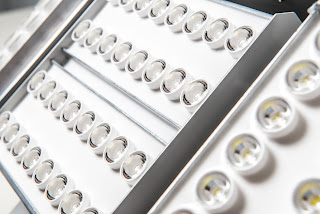Gemma Lighting were delighted to attend the Best Practice in
LED Street Lighting Conference at the National Physical Laboratory earlier this
week, engaging in seminars and discussions on one of Gemma’s key product areas.
LED Street
Lighting is quickly becoming the best option for many businesses and
authorities across the country, and on this day of debates including
participation from contractors, designers and manufacturers subjects such as measurement,
application and financing were raised between the members present.
 The NPL hosted the event at its base in Teddington,
Middlesex and being home to the Centre for Carbon Measurement the world-leading
centre of excellence in developing testing systems was the ideal location to
host the day’s proceedings.
The NPL hosted the event at its base in Teddington,
Middlesex and being home to the Centre for Carbon Measurement the world-leading
centre of excellence in developing testing systems was the ideal location to
host the day’s proceedings.
Gemma were one of the many LED specialists in attendance with
Mike Elwell discussing the challenges of implementing solid-state lighting (SSL)
in the first session of the day.
Mr Elwell spoke of the influence of industry bodies such as
the Institution of Lighting Professionals (ILP), which was formed in 1924 and now
has more than 1900 members.
As with many considerations regarding local authorities in
the current climate, the issue of reducing number of consultants in local
councils in order to reduce consultancy fees was highlighted as an issue with
regards to implementing new SSL, and Mr Elwell highlighted some common reasons
given for not switching to improved lighting solutions such as LED.
These were discussed throughout the day but what all
delegates were in agreement of was that these common issues were misunderstood –
the cost of installing LED light fittings for example was considered too
expensive even though prices are lower than when the technology first became
available and funding schemes are there to aid local authorities in reducing
costs and cutting carbon emissions via projects such as LED lighting.
Of course being at the NPL there was a heavy focus on
testing and measurement also, and Mr Elwell highlighted the need for more stringent
testing that would become standard across the industry – something Gemma and
the other manufacturers present certainly welcomed, as this means higher
quality products manufactured in the UK, such as those made at Gemma’s base in
Portsmouth, will stand out from cheaper foreign imports.
We then heard about the relationship between the NPL and
their Dutch counterparts VSL who have worked together on metrology and
environmental factors affecting SSL performance, and from Huw Convery on a street
lighting project in Salford before a LUX-TSI presentation on measurement and
data confirmation.
After lunch Teresa Goodman from the NPL looked at the
relevance of mesopic photometry in LED street lighting, and went over the means
in which it can be calculated, followed by a presentation by Steve Fotios of
Sheffield University on his MERLIN project, which stands for mesopically enhanced road lighting:
improving night-vision.
A panel discussion with the various speakers from the day
saw questions raised about LED performance, warranties and power supply options
that saw engaged input from many of the gathered delegates.
Andrew Dennington was next to speak on free-form optics and
the design and validation process behind their performance, and Graham Scragg
took the final session of the day by presenting street lighting projects in
Birmingham and Sheffield.
 |
| www.gemmalighting.com |
Gemma Lighting tries to reassure its customers in other ways
such as the three year warranty that comes as standard with all LED lighting, and the benefit of having the whole operation here in the UK, from the
sales team to the factory floor, so customer communications to be handled
easily and efficiently.
The high quality standards of Gemma’s products is one of the
key benefits for users, as the longevity and reliability can lead to a lifespan
of up to 100,000 hours and massively reduce maintenance costs, and with high IP
protection rated fittings Gemma’s LED lighting range is durable against adverse
weather conditions and vandalism.
Were you at the Best Practice Conference? Why not give us
your thoughts on some of the issues using the comments box below.
No comments:
Post a Comment